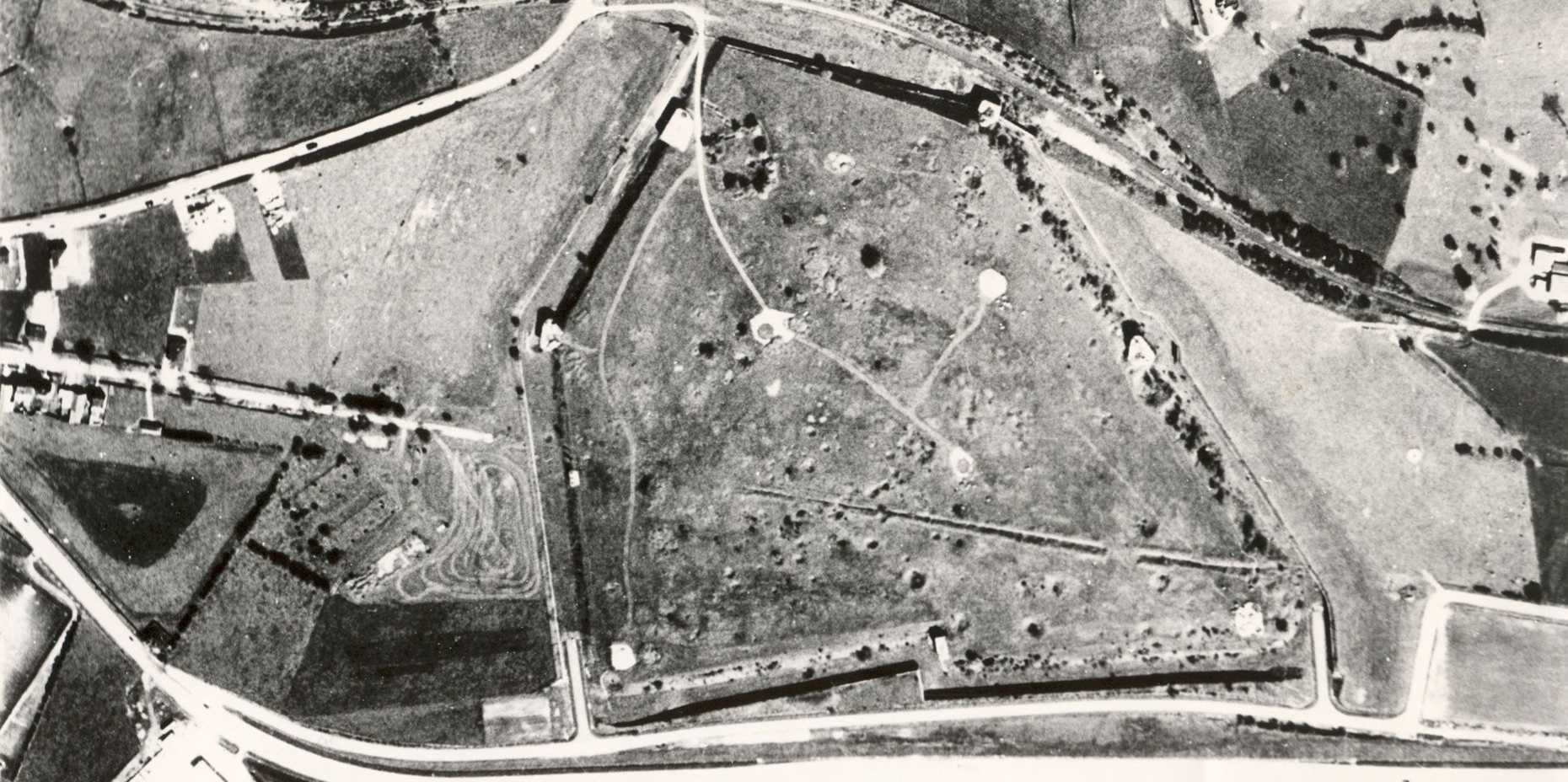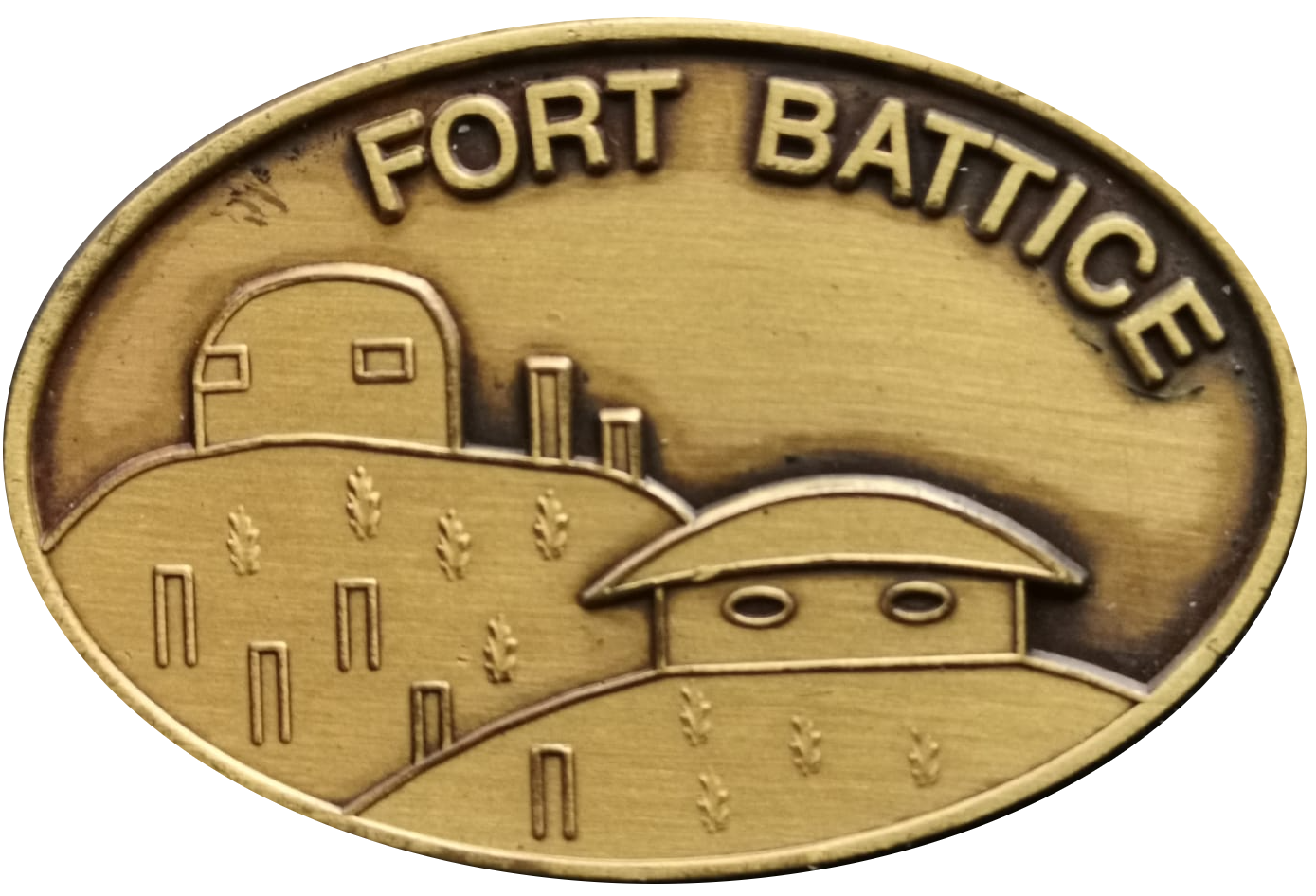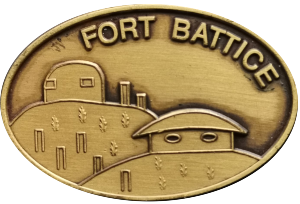





Fort Battice is a Belgian military stronghold.
Its construction started in 1934.
Being part of the fortified ring of Liège, it was one of the newly built fortresses in anticipation of WWII.
Together with its neighbours Aubin-Neufchateau and Pepinster-Tancrémont, it was part of PFL1 (1st Fortified Position of Liège).
The fort's main objectives were:
On 10 May 1940 the enemy started the assault on Fort Battice.
For 10 days the fort galantly withstood relentless heavy artillery and airplane bombardments.
In the afternoon of 21 May the German attacks even intensified, resulting in extensive damage to the fort.
At about 5 pm, a Stuka bomb managed to strike bunker Block I, resulting in utter devastation.
Block I suffered many casualties and moreover was completely cut off of the main part of the fort.
As a result a short truce was negociated, allowing for the inspection of the superstructure by the commanding officers.
This proved that the fort had become wing-broken and, after having executed appropriate internal sabotage, surrender followed in the morning of May 22nd.
What remained of the garrison (750 men, minus casualties) was taken to POW camps for 5 long years.
During the occupation by the ennemy, the fort was used as a guinea pig for all kinds of demolition techniques.
Unfortunately, after the war ended, the fort's installations were significantly dismantled by scrap-iron dealers.


Fort Battice is a Belgian military stronghold.
Its construction started in 1934.
Being part of the fortified ring of Liège, it was one of the newly built fortresses in anticipation of WWII.
Together with its neighbours Aubin-Neufchateau and Pepinster-Tancrémont, it was part of PFL1 (1st Fortified Position of Liège).
The fort's main objectives were:
On 10 May 1940 the enemy started the assault on Fort Battice.
For 10 days the fort galantly withstood relentless heavy artillery and airplane bombardments.
In the afternoon of 21 May the German attacks even intensified, resulting in extensive damage to the fort. At about 5 pm, a Stuka bomb managed to strike bunker Block I, resulting in utter devastation.
Block I suffered many casualties and moreover was completely cut off of the main part of the fort.
As a result a short truce was negociated, allowing for the inspection of the superstructure by the commanding officers.
This proved that the fort had become wing-broken and, after having executed appropriate internal sabotage, surrender followed in the morning of May 22nd.
What remained of the garrison (750 men, minus casualties) was taken to POW camps for 5 long years.
During the occupation by the ennemy, the fort was used as a guinea pig for all kinds of demolition techniques.
Unfortunately, after the war ended, the fort's installations were significantly dismantled by scrap-iron dealers.


